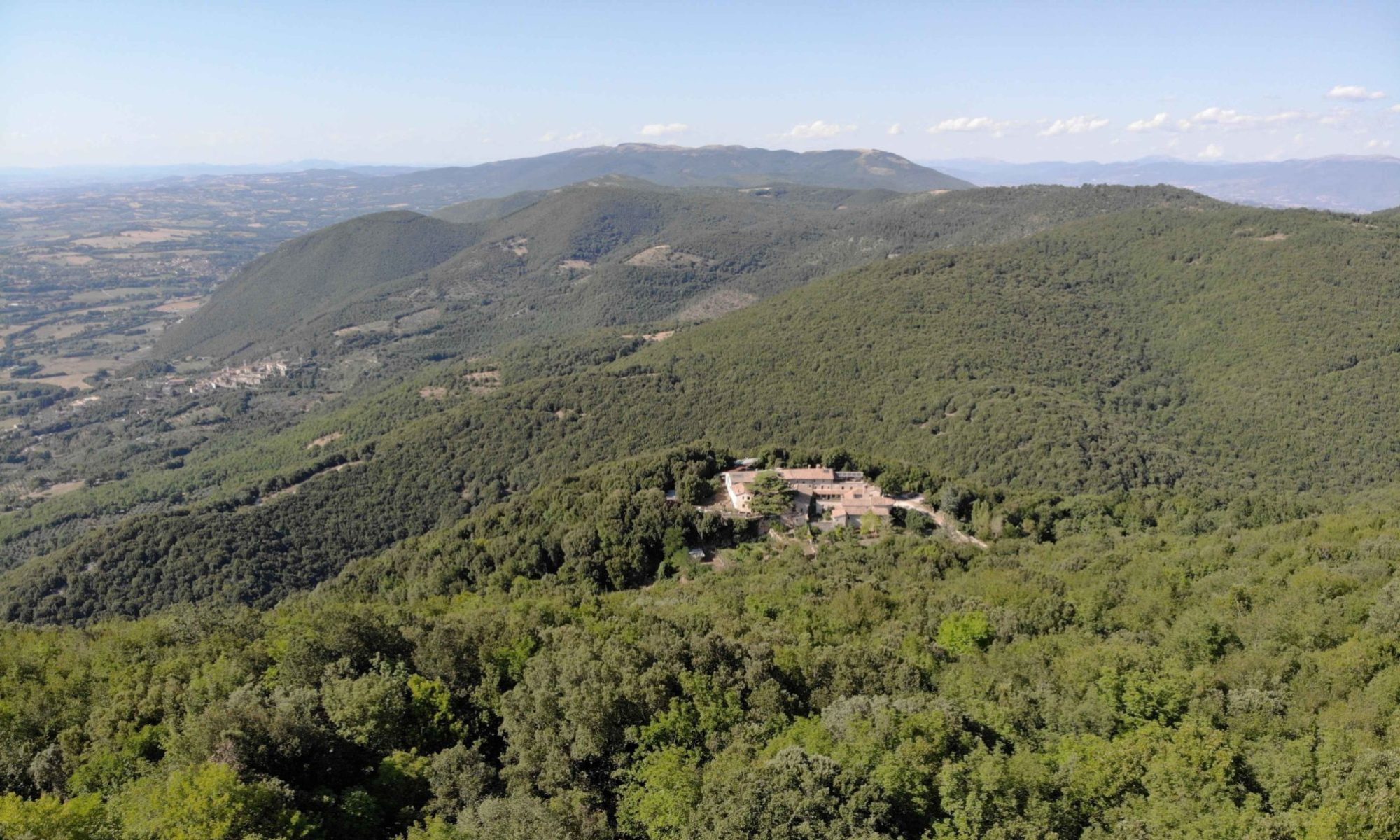The Church of the Annunciation was built by the Brothers at the beginning of the 14th century to accommodate the numerous pilgrims who made their way up here in devotion to Our Lady of the Annunciation and to Francis. Organised on the same model as La Porziuncola, the ‘Mother Church’ of the Franciscan churches, but brighter and more spacious, it is the sister church of many other of our early convent churches with that name: the Church of the Annunciation in Amelia, where I first put on the Franciscan habit and did my novitiate year, and those of Bevagna, Gualdo Tadino, Norcia and La Scarzuola. In responding to the call and coming to the Convent of the Annunciation at La Romita I closed a circle. I gave my first “Yes” in the Church of the Annunciation in Amelia when I was 16, and I gave my final “Yes” in the Church of the Annunciation at La Romita. Following Mary’s example, my life has been signalled by “Yes”, a joyous, decisive and committed “Yes” which I have never regretted and which I renew every day, despite my limitations, defects and mistakes. The Church of the Annunciation at La Romita is extremely sober and beautifully proportioned. It is an honour and a pleasure to make our songs ring out in this marvellous space with its perfect acoustic. When we restored the church, we removed the plaster to reveal the form and true colour of the tan stones, rebuilt the altar from Roman stones found scattered in the chapel and the church, remade the choir in elm wood and installed a glass window depicting the Canticle of Creation which illuminates it at sunrise. This welcoming and cosy space is the centre of life at La Romita: here, in silence, in listening to the Word and in singing the psalms, we absorb light, strength and courage.
The Church of the Annunciation takes us back to the story told by Luke the Evangelist (Luke 1, vv 26-38), a page full of charm, beauty and poetry. It is the joyous beginning of the salvation which Christ brings. A narrative that has nourished my faith (“How is it possible…For God nothing is impossible” Luke 1, vv 34-37) and determined my choices in life (“Behold the handmaid of the Lord” v 38). This connection was formed in front of the statue of Our Lady of Fatima at San Girolamo in Gubbio when I was 11 years old and has stayed with me for the rest of my life. In addition to the Magnificat, which is sung every day at Vespers, there are three passages from the Gospels to which I have always returned for reflection: “Mary kept all these things, and pondered them in her heart” (Luke 2, v 19). At the marriage of Cana, at the very beginning of Jesus’s public mission, his mother said to those serving: “Whatever He says to you, do it” (John 2 v 5). These are the last of Mary’s words quoted in the Gospels. She could not have given us more valuable advice. Mary, the Mother of Jesus, has had an important role in the story of salvation: there is no Son without a Mother. And she should also have an important place in the lives of those who follow Jesus. Mary is also to be found under the Cross, the culmination of the mission: “When he saw His Mother and next to her his much-loved disciple, Jesus said to His Mother, ‘Woman, behold your son’. Then he said to the disciple: ‘Behold your mother’” (John 19, vv 26-27). John the Evangelist symbolizes all those who love Jesus and so live in communion and community with Mary. Mary’s presence in the Gospels is a function of her Son’s mission. It is an inestimable, but silent, presence. For this reason, at La Romita devotion to Our Lady is expressed in simplicity and sobriety, in keeping with the architecture of the church, the structure of the choir, the singing of the Magnificat, the Ave Maria and Francis’s greeting: “Hail Lady, Holy Queen…Hail His palace, hail His tabernacle, hail His house. Hail His robe, hail His handmaid, hail His Mother” (FF 259). In the centre of the Church of the Annunciation, in front of the altar, hangs the image of Christ, the Crucifix of San Damiano; in second place an icon of Mary with the baby in her arms; in third place, smaller, Cimabue’s image of Francis.
Excerpt from La Romita: Utopia?, Frate Bernardino, 2020
ISBN: 9788868081560

